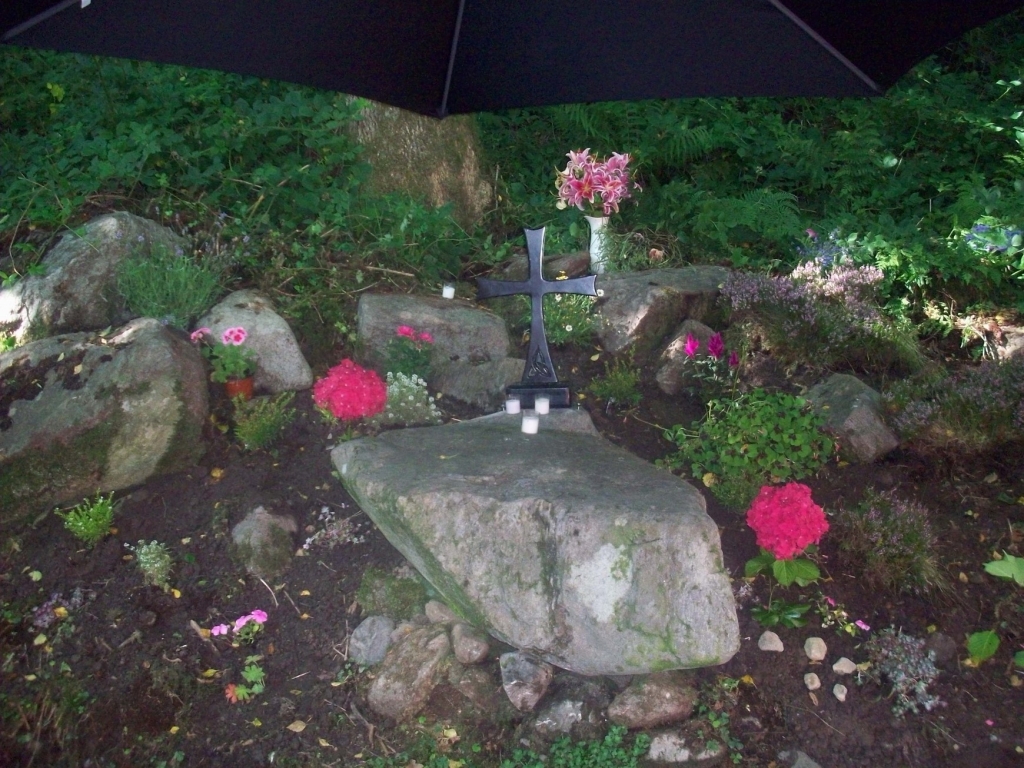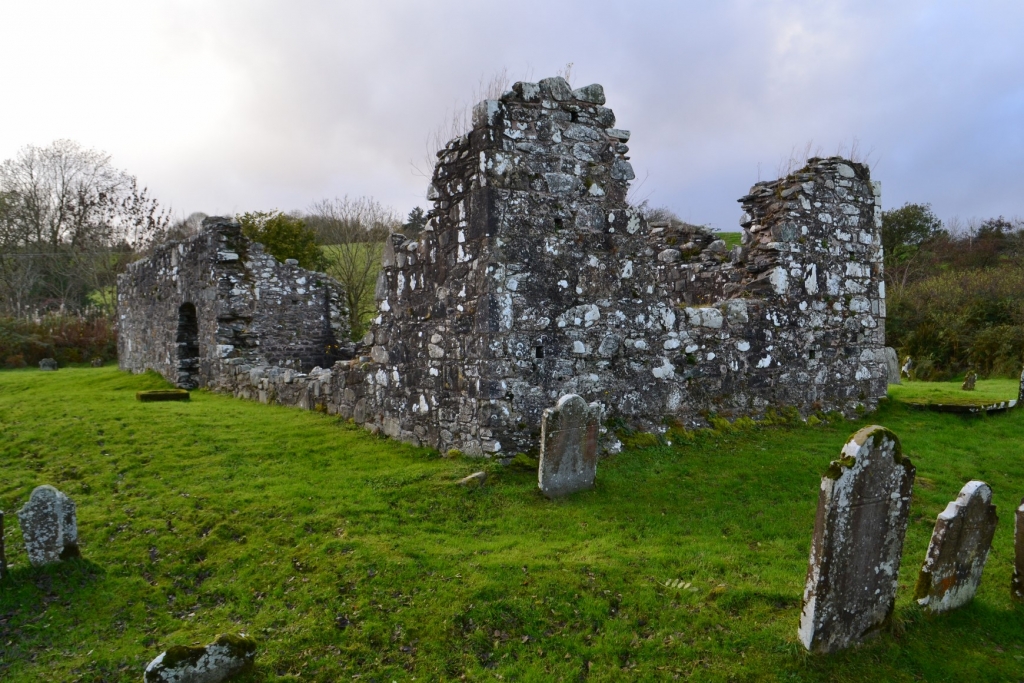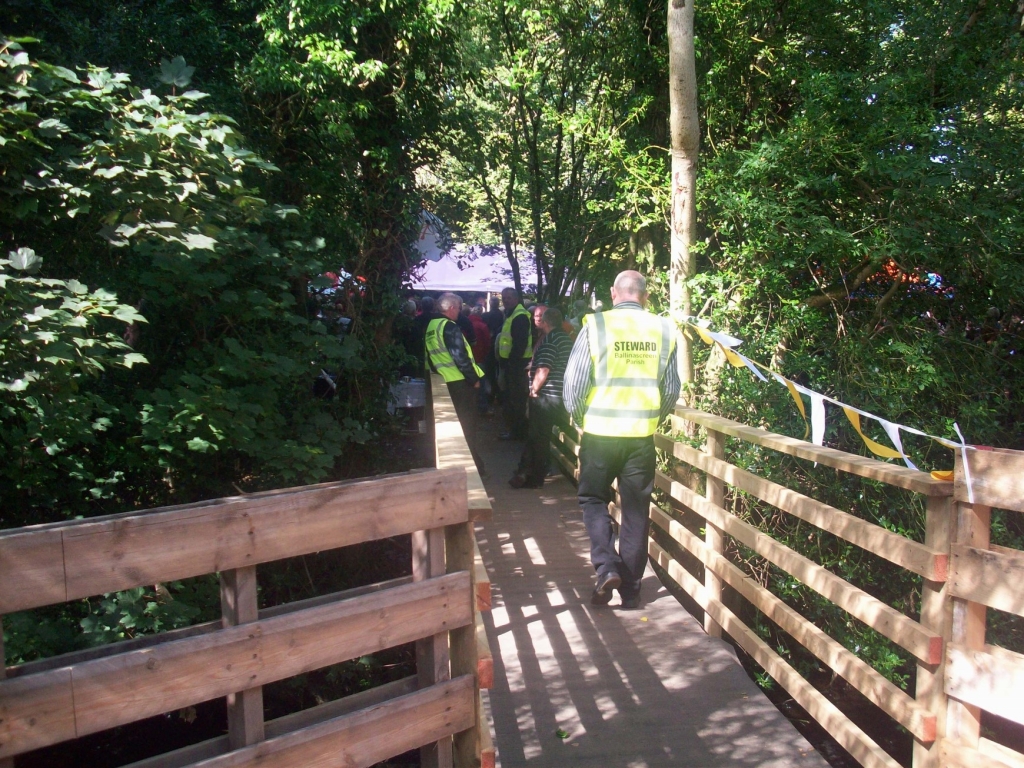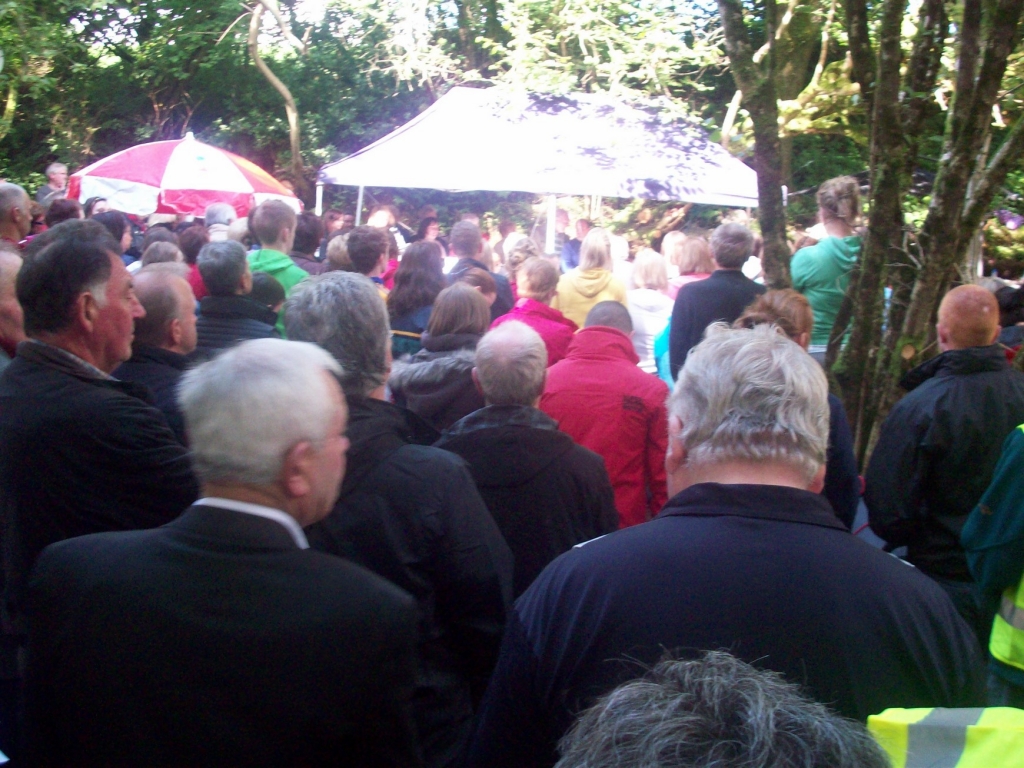Penal laws in Ballinascreen.
The Penal laws were introduced in Ireland with the Plantation of Ulster but did not have a great affect until the year 1691 after the third effort of the Irish in a century, to overthrow their English conquerors. The English wanted to do away with Catholicism in Ireland and the Irish associations with Rome and Spain who were their arch enemies. They also wanted to reduce the Irish people and their leaders to poverty so that they would never again be have the power to rise up in rebellion against them. So the Penal laws were not only about religion but equally they were about creating a huge gap in power and class between the Irish and their rulers. Irish people under these laws were not allowed to have property or to inherit property and they could not own a horse worth more than £4.They were not allowed schools or to leave the country to study abroad as they had been doing for a long time .Worse still Catholics had to pay a tax to the Protestant Established Church. Then, to make matters even worse, all bishops, monks, friars and nuns or anyone involved in the preparation of people for religious vocations were banished from the country. The idea was that with nobody to ordain new recruits to the priesthood, the Catholic religion would in time, die out altogether. Nevertheless, these Penal laws were complicated laws and proved over time to be difficult to enforce.
Ballinascreen escaped the worst of the Penal laws, compared to other parts, for a number of reasons. Firstly, the Plantation did not bed in well in Ballinascreen because of the threat of attacks on settlers by the local inhabitants who were able to make numerous attacks and also because the area was so dangerous, few would want to venture there. Furthermore, the parish was almost completely covered in thick forest, with no roads or bridges and this made travel very difficult for people who might wish to enter such a place to impose or police these laws . As a result, the local people were left alone and life just continued on in the old Irish ways with people able to live and worship in their own area with little interruption from outsiders.
We do however, have a record of one early victim of persecution under the Penal laws in the parish of Ballinascreen. In March 1621, Fr. John McGillen, parish priest of Ballinascreen was convicted of “exercising the office of priest in Ballinascreen in virtue of authority received from Rome” and was sentenced to life in prison and loss of all his goods. We know nothing of what became of the unfortunate priest after that. The parishioners would undoubtedly have been shocked at the treatment of their parish priest but it did not deter them from their faith and a PP called Fr. Hegarty was given the position and things seem to have carried on in the parish where children were baptised, grew up and died in the old faith.
Priests of the Penal times in Ballinascreen.
Things changed however after the Irish backed King James`s revolution to retake the crown of England in 1688 in the hope that he would treat them more favourably when he came back into power. When the king was defeated, Parliament came down heavier again on the Irish in an effort to leave them that they would not be able to rebel again. This is when we find the next incident involving the persecution of priests from Ballinascreen just over 70 years after Fr McGillion was sentenced.
In 1695 an Account of `Popish Clergy` that live in the Diocese of Derry` names four priests in the parish of Ballinascreen as :
Torlagh or Terence McRory, aged about 45 years, middle sized black man. Dwells near Ballinascreen church and is a secular priest.
Bryan O`Cashedy, aged about 50 years, of a middle stature, cunning and contentious: hath no fixed residence, secular priest.
James McConway, aged about 30 years,went beyond the seas before 1688, came back again about 2 years since, is the reputed guardian of the Franciscan Friery they design to have in Ballinascreen, a close subtle fellow and a Regular priest.
Phillip McHugh, aged about 40 years, was not out of this kingdom that I can hear: a confident dissembler, a Regular priest.
The fact that four priests were able to live in the parish, while other parishes would have been lucky to have one shows us how safe it actually had been to be a priest in Ballinascreen up to that year. However, change was coming. Various new bills were passed in parliament to put more pressure on the Catholic church in Ireland after this latest rebellion.
All priests were ordered to register at their nearest assizes, and submit all information about themselves and their parishes, when and where they were ordained and by whom. They had also to enter sureties of £50 that` he shall be of peaceable behaviour` and not travel out of his parish. This was an attempt to cut the priest off from his superiors wherever they be, further weakening the church in Ireland.
Here are a few bits of information on famous clergy during the Penal times in Ballinascreen.
Fr. Torlagh/Terence McRory.
Ordained in 1674 at Ard Patrick in Co. Louth by Blessed Oliver Plunkett.
Went south with King James`s army and was at the siege of Limerick before heading back north again and taking up his position in the parish of Ballinascreen. He lived in Dunlogan. He was of strong character and always stood up for what he thought was right. When he was summoned to appear at the assizes in Bellaghy to sign the oath of abjuration, he simply ignored it and refused to go. The fact that the magistrates stated that they did not expect him to turn up shows the known man of courage that he was. Some time before this the Seneschal of Draperstown took a decree against Fr. McRory and seized all his goods. However after appealing it Fr McRory got his goods back again.
When another decree ordered him to surrender them again, he refused to do so. Jackson , the Senechal, felt that Fr.McRory was becoming too well off and appealed to the authorities to call him in and make him sign the oath of abjuration which we know he refused to do. Fr. Terence McRory is buried in the old churchyard at Moneyconey and the inscription on his gravestone reads:
Beneath here lies a worthy man, Fr. Terence Rodgers, alias McRory. I do not know if the sun and moon would change after the expiry of his age. He was a great supporter to the widowed, fatherless and the poor .Manys the stranger he entertained within his door. He was the leading star of the north and of the clergy.
Died Aug 10 th 1720 Aged 70.
Requiescat in pace
It is easy to see that this was indeed a great man who made a huge impression on all those whom he was associated with in those difficult and trying times.
Fr. Bryan O`Cashedy.
Not much is known about him other than what was said earlier in the Account of Popish Clergy in 1695 for the diocese of Derry. He would most likely to have been curate to Fr. McRory and as such, been illegal. Hence no fixed address given at the time.
Fr. James McConway.
Fr. McConway studied abroad before coming back to Ballinascreen in 1693. It was said that he was being groomed to become guardian of a Franciscan Friary in Ballinascreen but it is believed that this establishment was really planned for Badoney in Glenelly. It is worth asking the question, was he an uncle or close relation of Bishop Neal Conway who would be installed in Ballinascreen a generation later?
The last we hear of Fr. McConway is that on the 24th of October 1696 he signed his name to a letter to William King, the Protestant bishop of the Established church in Derry, from his jail cell in Strabane, begging assistance for his plight and that of four other priests. His request was ignored and that is the last we hear of him or his fellow priests.
Fr. Phillip McHugh.
Fr.McHugh was a companion of Fr. McConway and ended up in jail with him in Strabane and we would assume, met the same fate, whatever it was. The only other information we have is from the “Account of the Popish Clergy“ in 1695 as quoted earlier.
Fr. Denis McRory.
Suceeded Fr. Terence McRory as parish priest of Ballinascreen. Known as the “sagart Franncach” or the French priest because he had lived in France for a long time. He had been the Ancient Director of the Fountain and Morari in France. He had also been held in very high esteem and lived a good life full of everything which he needed but he chose to leave it all behind him to come home to live and administer among his own people, amid poverty, violence and danger. He must have been indeed a selfless man to make such a sacrifice for his country and his people.
Bishop Neal Conway.
Fr. Denis McRory was succeeded by Dr. Neal Conway. From 1601 until 1720 there had been no bishop of the Derry Diocese. In 1714 the papal representative of the time, Dr. McMahon began to canvass for Dr. Conway to be elected as the Bishop of Derry .Dr. Conway had studied at the college of Lombards in Paris and took his doctorate there. He had a reputation among his fellows for his sanctity and learning. He was promoted to the position of Procurator of the College of Lombards. Again like Fr. McRory before him he chose to leave a comfortable and elevated position behind him to return to his own people in 1710. He was made bishop thirteen years later on April 7th 1727. He took up residence in Ballinascreen and stayed there until his death on Jan. 6th 1738. It is said that he was born in Broughdearg, close to the church of Our Lady of the Wayside. The house is still occupied, albeit altered or renovated in recent times. Bishop Conway is buried in the graveyard of the Old Church of Ballinascreen at Moneyconey.
On his headstone:
Here lieth the bodie of Neal Conway, Bishop of Derry, who departed this life, January 6th 1738 aged …?? years.
On a gravestone beside it reads:
This tomb and capitall was erected by Peter Conway, nephew of the aforesaid Neal, Bishop of Derry 1749.
It is worth noting that it was a reflection of how safe the parish of Ballinascreen was at that time that not only was it the safest place for the bishop to live but his nephew in 1749 felt safe enough to erect this tombstone to him and writes his own name, as being the donor. This is evidence of a gradual easing of the Penal laws in the country as a whole at the time. In fact, a tragic incident happened in 1744 while people were attending a mass in secret in a Dublin house, killing the priest and several people, drew such widespread sympathy that it became the catalyst for change, leading to churches being allowed to be built in the city soon afterwards. This wind of change gradually spread throughout the country and the demise of the Penal laws was already gaining momentum.
Fr. Bryan McRory.
Bishop Conway was succeeded by Fr. Bryan Mc Rory who was an industrious and robust man. He built the first chapel in Ballinascreen, taking advantage of the easing of the Penal laws. He had it built in Strawmore near the old Druidical Temple. It was very small and most of the congregation had to stand outside. Then in 1753, he built the church at the Whitewater which was known as “the barn chapel”. Barns had been used all over the country for saying mass during the Penal days because it took very little preparation and left little evidence behind that any gathering had taken place.
Fr. Mc Rory lived among and administered to his parishioners for forty years and died in 1772, aged 75 years.
Mass rocks.
.
Local tradition tells us that during the Penal times mass was said here and there in the open countryside at mass rocks. There is the massrock at Glengamna close to the Glengamna river which has been restored and mass has been celebrated there on two occasions in recent years. It was the perfect place to hold a secret mass as it lies in a hollow by the river bank and is surrounded by woodland. The Mcbride family who live close to the site have built a bridge across the river to provide access to it. They also maintain the site and it is well worth a visit.
Parishioners attend mass at the Mass Rock at Glengamna.
There are also other places mentioned as having been the site of open air masses.
Leac na haltora – This one is said to have been in Drumderg close to the march with Derrynoid.
Leac na haltora – In lower Doon, near where the Doon river meets the Moyola.
Lub na haltora – In Dysert near where the Whitewater joins the Moyola.
Cnoc na haltora – A hill in Labby where funerals passed on their way to the graveyard at Moneyconey.
………………………………………



